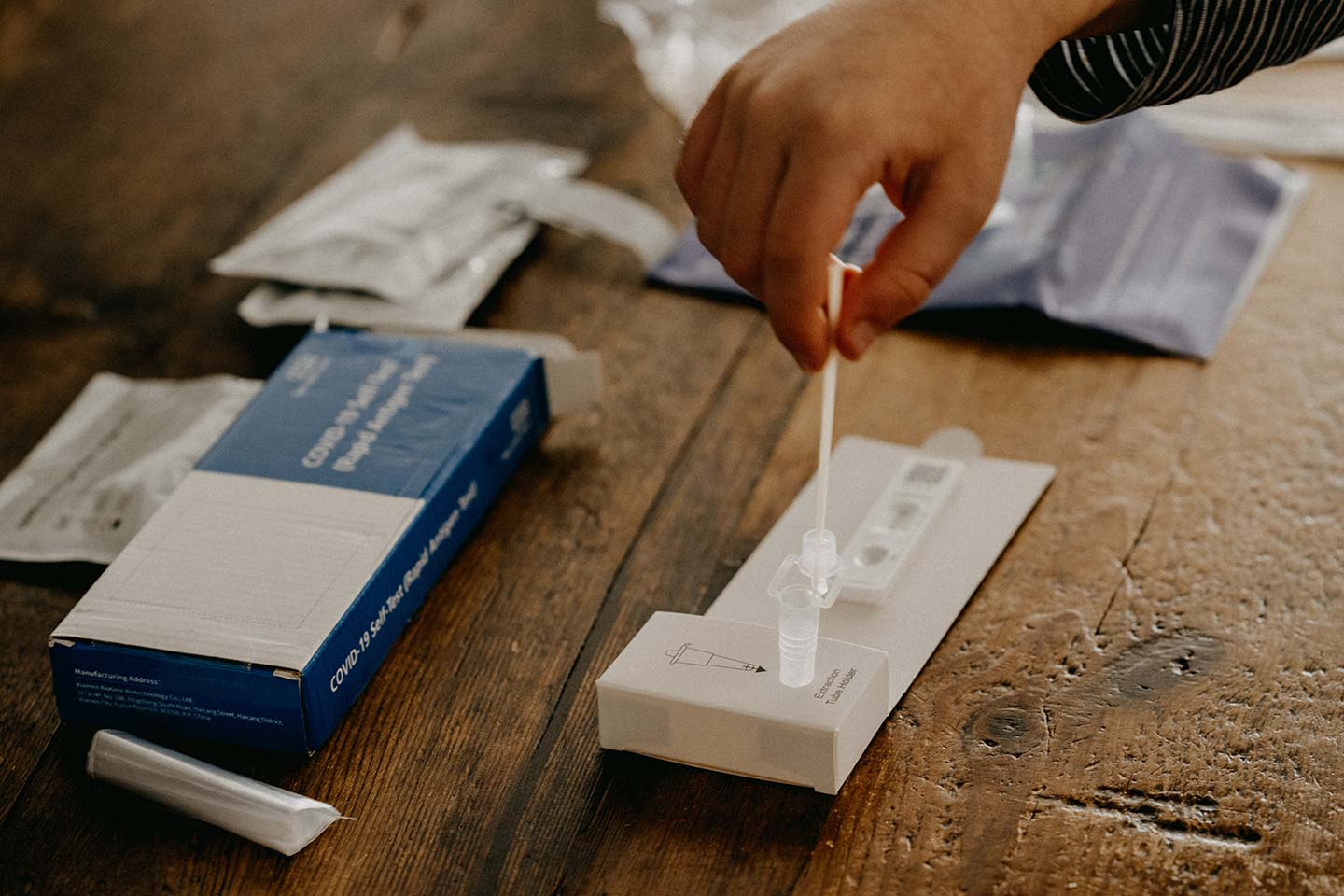How likely is a positive COVID-19 lateral flow test to be wrong?
Rapid antigen tests for COVID-19 are less sensitive than PCR tests, but here we explain why you should never ignore a positive result.
- 9 June 2021
- 4 min read

Lateral flow tests (LFTs) can tell you if you’re infected with COVID-19 within minutes, rather than waiting 24-48 hours for the results of a PCR test. They’ve been suggested as a means of avoiding self-isolation or ensuring that it is safe to visit vulnerable people. However, because they are less accurate than PCR tests, the results need to be more carefully interpreted.
Sensitivity versus specificity
When people talk about the accuracy of different COVID-19 tests, what they often have in mind is their sensitivity. This is the ability of the test to accurately diagnose people who are infected with SARS-CoV-2. A recent Cochrane Review, which combined the results of multiple studies assessing the accuracy of LFTs, found that the average sensitivity of such tests was 72% among people with COVID-19 symptoms, and 58% for people without symptoms. This would mean that in for every 100 people infected with COVID-19 who had symptoms, only 72 of them would test positive on a LFT.
Most people who are infected with coronavirus remain contagious for 4–8 days, with most transmission occurring two days before to five days after developing symptoms.
Because of this relatively low sensitivity, a negative test result cannot guarantee that you aren’t infected – false negatives are reasonably common. So, if you have any symptoms of COVID-19, you should behave as if you are infected, which will mean self-isolating and ideally book a PCR test if possible.
However, if you get a positive test result, you can be more confident that you really are infected. This is because the specificity of LFTs – their ability to accurately diagnose uninfected individuals – is higher, and therefore false positives are highly unlikely. In people who did not have COVID‐19, LFTs correctly ruled in infection in 99.5% of people with COVID-like symptoms, and 98.9% of those without them.
Whether or not the test is being used in an area with many COVID-19 cases is also important. If an LFT (or any diagnostic test) is used in a context where the disease is very rare, the likelihood that a positive result is true is lower and the likelihood that a negative result is true is higher. Conversely, if an LFT (or any diagnostic test) is used in a context where the disease is very common, the likelihood that a positive result is true is higher and the likelihood that a negative result is true is lower.
Have you read?
This still means that a small number of people who receive a positive test result will be unnecessarily told to self-isolate (the precise number depends on the prevalence of the virus in the community at any given time). To reduce this risk, some countries ask anyone who tests test positive on a LFT to do a confirmatory PCR test.
Infection versus infectiousness
Although PCR tests are widely regarded as the most accurate way to diagnose COVID-19, one problem with them is that fragments of viral RNA can linger for weeks after infectious virus has been cleared – meaning you may test positive even though you no longer pose a risk to other people.
Most people who are infected with coronavirus remain contagious for 4–8 days, with most transmission occurring two days before to five days after developing symptoms. However, the average (median) duration of people testing positive using PCR is 22–33 days.
Even though LFTs are less sensitive than PCR, the Cochrane Review found that they were most accurate when used during the first week after symptoms developed (when 78% of confirmed cases recorded a positive LFT result). This is most likely because people have more virus in their bodies at this time.
For this reason, some governments, such as the UK, are exploring whether daily LFTs could be used as an alternative to quarantine for close contacts of people with COVID-19. The contacts are required to test themselves each morning for seven days. Those who test negative and develop no symptoms are permitted to leave their homes to carry out essential activities, including work. They must then take another test the next morning to see if they need to self-isolate that day, or can continue to leave the house for essential activities.
Recommended for you





